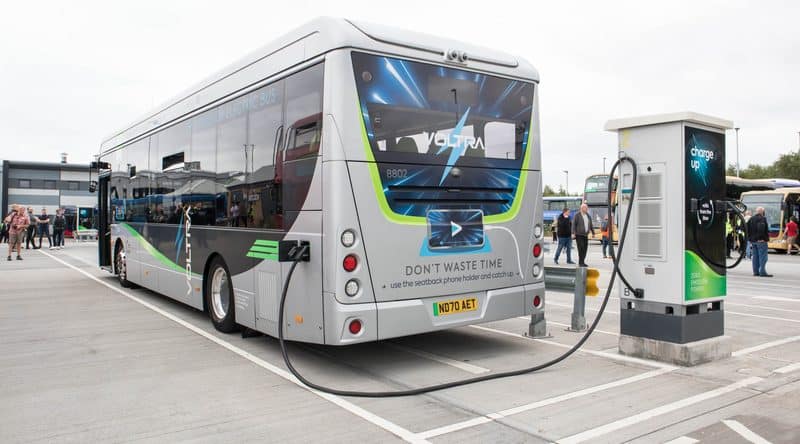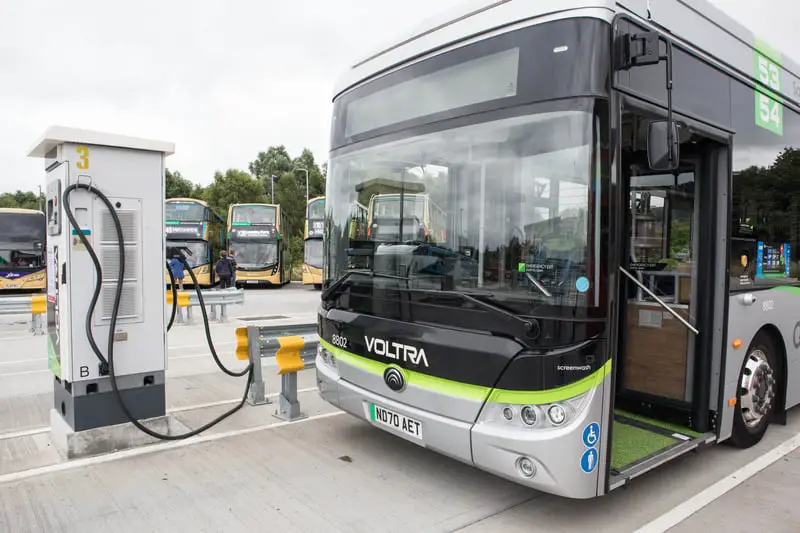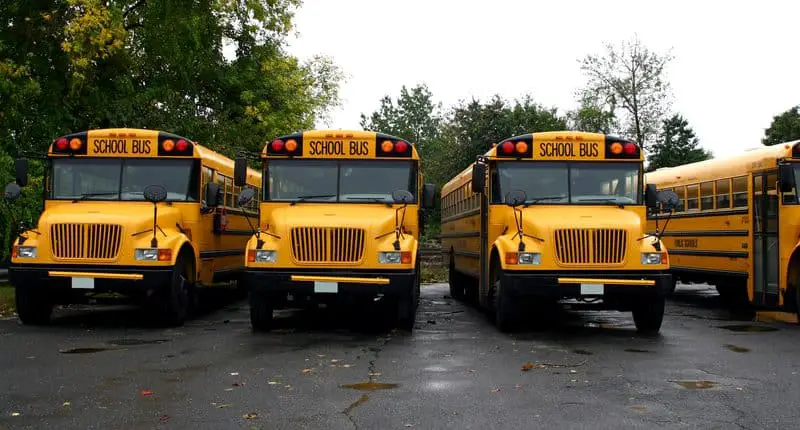
Public transit buses are more efficient than personal transportation in terms of carrying and moving passengers. However, like other vehicles, most transit buses require refueling, and passengers seldom witness these large vehicles being fueled at a gas station.
So, if they are hardly ever at a local gas station, then where exactly do buses get gas?
After their shift is over, most transit buses are driven back to the bus depot for refueling. A maintenance team drives the buses from the depot (also known as the bus garage) to a gas point for refueling. The fueling site has both gasoline and diesel pumps for every type of bus.
Knowing where buses miraculously refuel is always educational. In fact, a bus depot or garage also serves as the location for any maintenance or repair work that may be necessary, as well as a thorough cleaning before it is ready for its next shift.
However, there is more to buses than meets the eye. So let’s dive into what fuels these massive machines, including their fuel consumption, tank size, and more.
Where Do Buses Go To Refuel?

City, town, and school community buses have their own routes and refuel schedules. Of course, these routes are calculated by how far each bus can travel before it needs to be refueled.
These schedules inform the bus driver about arrival times, route numbers, and how and when to return to the depot.
At this point, bus drivers will confirm that all their passengers have exited the bus before returning to the bus depot’s large parking bay.
The driver exits when the bus arrives at the depot, and the maintenance crew enters. These are the men in charge of cleaning the bus, inspecting the engine and other mechanical components, and filling the gas tank.
Bus depots often have the following stations readily available for all their buses:
- Internal Parking Bay: Inside the garages will be parked buses and recovery vehicles.
- External Parking Bay: In front of the bus depots, staff vehicles and certain buses can be parked here.
- Fueling Point: Fueling points are commonly found at bus depots for fueling buses with gasoline or diesel.
- Fuel Storage Tanks: Storage tanks are often located underground or in a secure location with on-site sections for storing fuel pumped from the fueling point.
- Engineering Bay: A section for any restoration or maintenance required.
- Inspection Pits: Inspection pits are found near or often in the engineering bay for mechanics to look underneath buses for any damages or maintenance.
- Bus Wash: Most bus depots include either a virtual bus wash where maintenance staff drives the bus through or a section that supplies them with tools to wash the bus.
- Brake Test Lane: A short strip is included in the property where buses test their brakes.
- Bus Depot Office: Most bus depots include a staff canteen and an administration office
As you can see, a bus depot has all the bells and whistles required to maintain its vehicles for every shift.
Similar procedures are followed by school buses, especially if they are the owner of a sizable fleet of buses.
What Fuel Do Buses Use & How Far Can They Travel?

According to the AFDC (Alternative Fuels Data Center), a report in 2019 stated that transit busses are predominantly diesel engines, while more are turning towards natural gas, followed closely by hybrid electrical buses.
Most buses operate on diesel fuel rather than gasoline. However, not all buses are engineered equally, just as not all vehicles.
For instance, a school bus could have an 80-gallon tank, but the same model with a different company might also have a 100-gallon tank, while a Greyhound bus traveling cross-country can have a 300-gallon tank.
The bus’s range on a single tank will also be influenced by its engine. For example, a 2019 Bluebird All-American school bus with an 8.3 liter Cummins engine can go around 700 miles on a tank of diesel fuel.
Although diesel engines have continued to be the most common form of power, manufacturers have increased the selection of vehicles that run on alternate fuels, such as CNG (compressed natural gas), propane, gasoline, and hybrid-electric buses.
In recent years, major companies have started using CNG and hybrid buses because they are healthier for the environment and more cost-effective.
Excellent examples include:
- The Capital District Transportation Authority (CDTA) runs 77 hybrid-electric buses in its four-county service region, Albany, New York. Hybrid buses, which get at least 50% more mileage than standard diesel vehicles, make up more than 20% of the CDTA’s fleet of regular route vehicles.
- Dallas, Texas’s Dallas Area Rapid Transit (DART) is close to finishing the conversion of its bus fleet from diesel and liquefied natural gas to CNG (compressed natural gas). Early in 2015, the city bus fleet transfer was finished, and New Flyer has since received an order to replace 46 express buses and 17 more buses for service expansion.
Why Cross-Country Buses Refuel At Local Gas Stations
For travelers without a car, long-distance bus travel may be an engaging, affordable, and practical way to experience the United States.
Buses offer more regular departures than trains, cover a larger portion of the nation, and, unlike air travel, don’t need passengers to go through security checks.
In addition, bus travel is typically affordable because of the rivalry between the many carriers, although it is not the quickest option. Even a one-way journey between two cities sometimes costs as little as $1. However, depending on the distance, you may not experience a stop where the bus may need to refuel.
Shorter runs, which can be up to several hours long, may not have any stops. However, on longer routes, planned stops will be made to refuel, either at cities where people are picked up and offloaded, and you can get off the bus for a short while, or at a truck stop where you may get off to eat and drink in a café or restaurant. Usually, longer scheduled stops are noted on your ticket.
As a result, city-to-city bus services, such as Greyhound, are among the most frequently spotted fleets at gas stations in town and along the highway as part of their refueling schedule since it may be necessary.
Conclusion
Because buses are virtually always seen on the road and rarely seen at a local gas station, it may seem odd to investigate where they refill.
However, almost all local transit and school buses return to a bus depot, where buses are maintained, repaired, cleaned, and refueled by trained personnel.
So ask the driver about their bus depot the next time you board a bus; you might just surprise them!
